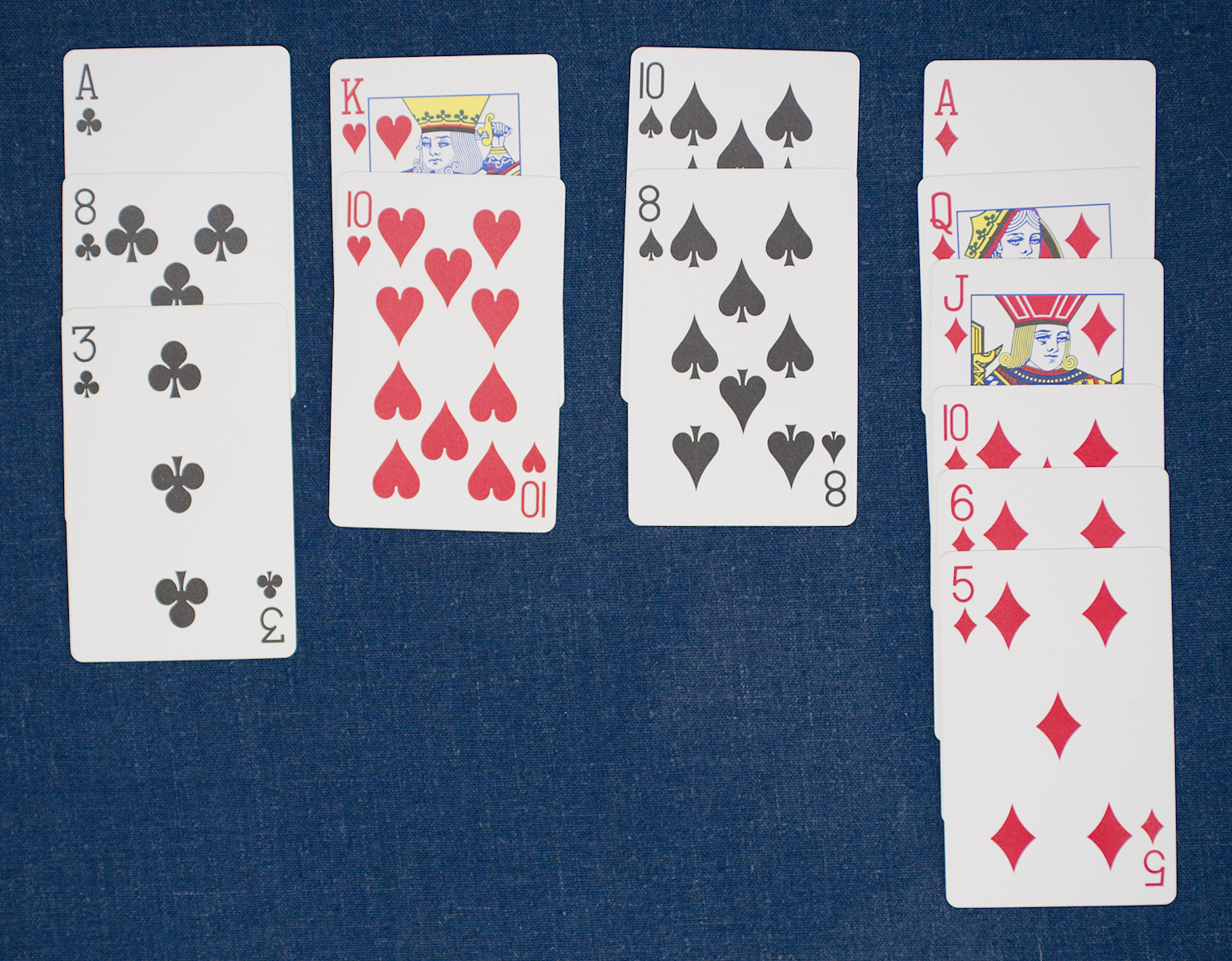In every bridge hand, there is one declarer, one dummy and two defenders. The dummy puts their hand on the table after the opening lead. Their partner tells them what to play. Dummy should not make suggestions about what to play. Dummy’s partner is called the declarer. The other two players are defenders. Let’s take a look at what a bridge deal looks like from declarer’s point of view.
Here Declarer is South, at the bottom of the page. Diagrams in webpages books and newspaper columns are usually arranged this way.
Declarer tells Dummy what to play, even if there is only one card left in the suit led. Dummy should wait for Declarer. Declarer may be thinking. Declarer can use shorthand when telling Dummy what to play. “Ruff”, “Ruff high”, “Small spade”, “High Spade”, would all be valid instructions. “Ruff” would mean to play the smallest trump. “Ruff high” would mean to play the highest trump. “Small spade” would mean to play the smallest spade in dummy. “High spade” would mean the highest. If Dummy must follow suit, you can omit the suit. “Play the seven” or just “seven”.
When playing with physical cards, the dummy should be sorted into columns of suits, with the highest cards at the top of the columns. If there is a trump, it should go on Dummy’s right, (Declarer’s left). Here is an example:

This is what the cards look like to declarer. For dummy they are rotated. The above deal either has clubs as trump or is being played without a trump suit.